They orginally shared at Drumchapel Amateurs, before moving in with Yoker Athletic, in Clydebank, at the beginning of the 2008/09 season.
Clydebank currently play in Division One of the same league as Yoker Athletic.
This ground is a magnificent little relic. There have been a number of improvements apparently since Clydebank moved here, I dread to think how rundown it was before! I visited here at the beginning of March 2010, and on getting here found high brick walls surrounding the ground, I didn't think I would be able to gain access, but thankfully I did.
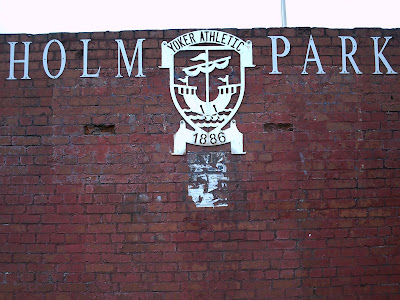
Here are the turnstiles, firmly locked.
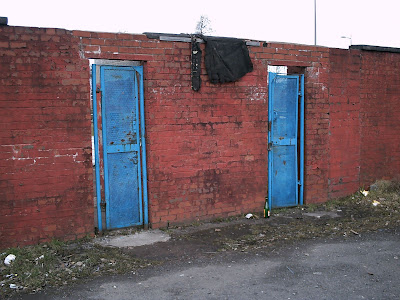
Past them was this entrance gate, club crest on it, but with a grim security sign on it. Luckily not so secure, as it was pulled to, but not locked. Yes, I'm in!
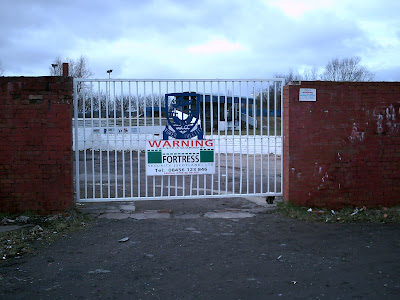
Through the gate we look across the pitch, surrounded by a low brick wall.
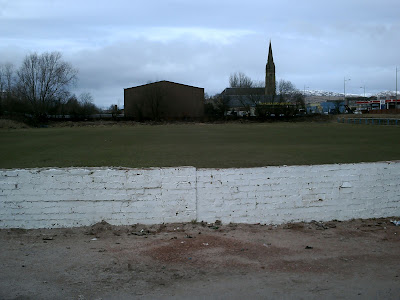
To our right is some terracing down the side.
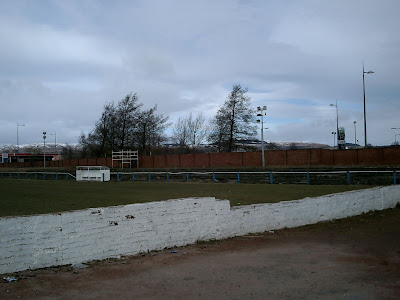
And to the left is more terracing, and the barrelled cover.
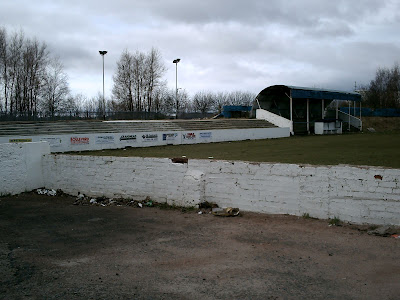
Our tour will go clockwise, from behind the goal, as if we have come through the turnstile. To the left is the club building, securely shuttered and locked. This must be the bar & changing rooms.

It would be safe to assume that this is not the most salubrious of areas!
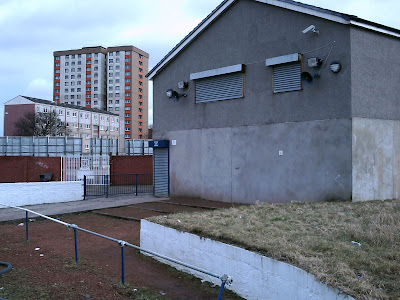
From in front of the building we look back behind the goal.
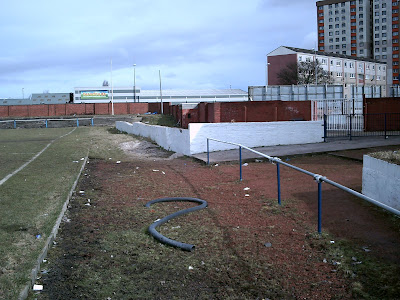
Beofre looking down the side, where there is some decent terracing.
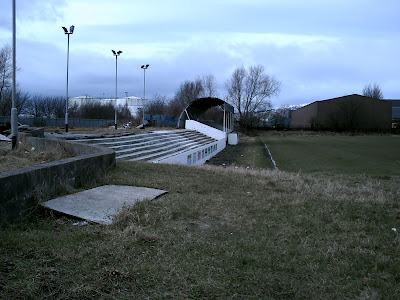
This must be the recent improvements, as the terracing looks newly concreted.
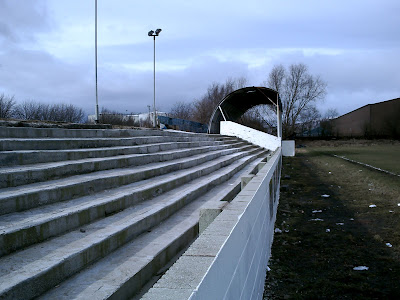
A similar shot, but a slightly different angle pitchside.
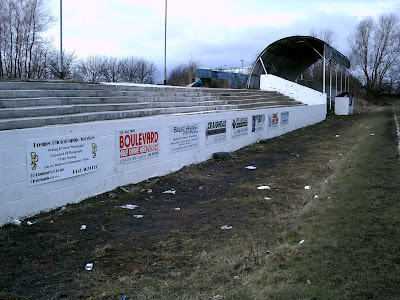
Here is the cover, with a dugout in front. Scottish non league differs to English in that dugouts are often on opposite sides of the pitch.
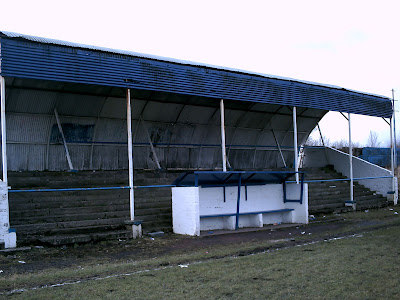
Here we look directly into the barrel!
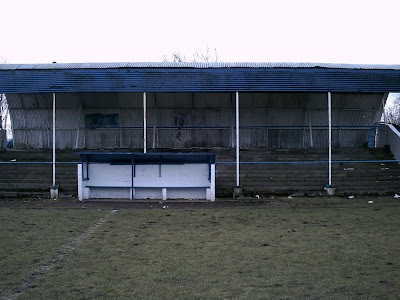
I suppose we could say then, that we're staring down the barrel in this picture!
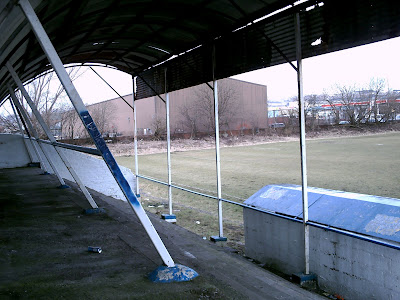
From under the cover we glance back to the refurbished terrace.
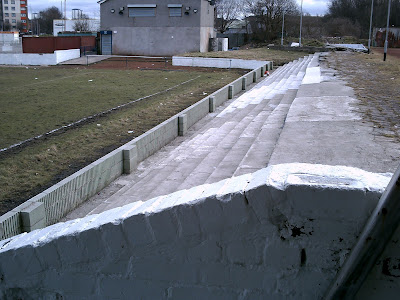
This is the roof of the dugout, plenty of graffiti scratched onto it. As a South Londoner the Millwall etching made me smile!
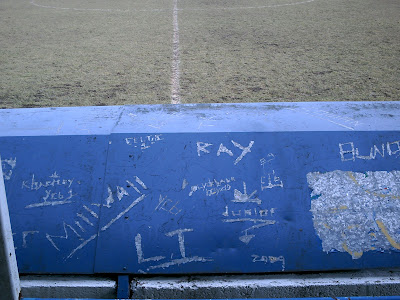
Looking directly across the centre circle we see the other dugout.
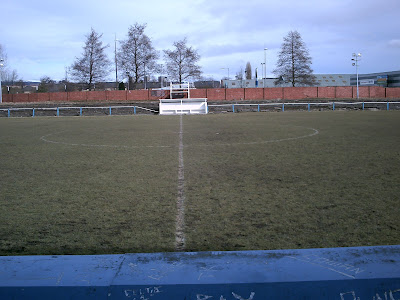
Past the covered terrace is an old bank, possibly an old terrace, reclaimed by nature. I have no idea, but I wonder if the 'new' terrace was like this before Clydebank settled?
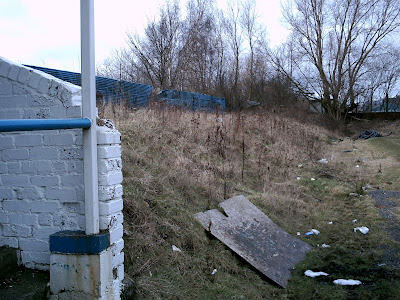
The cover from the side, old oil drum next to it. Big barrel, little barrel?
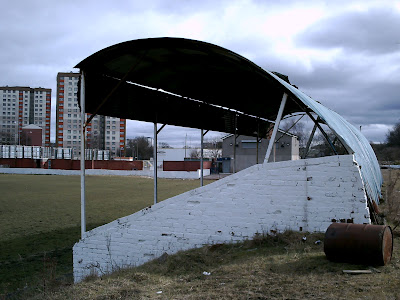
Almost at the corner, we look down the touchline, toward the barrelled enclosure.
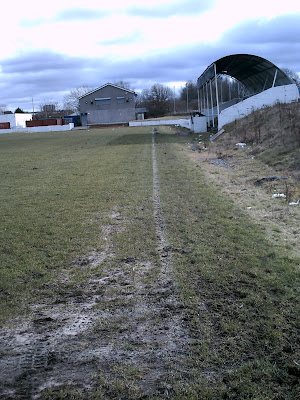
No spectator standing behind the goal, just an overgrown area.
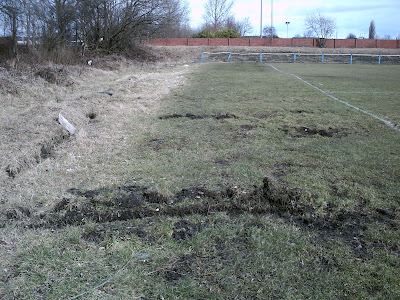
There is an old open terrace all the way down the main road side. Old being the word!
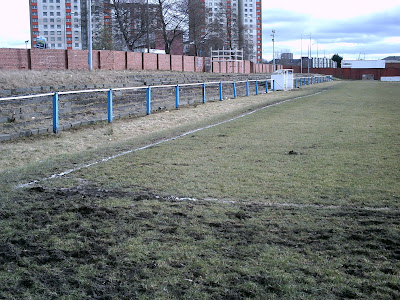
It's overgrown right in the corner, almost hidden completely. Here we see the slight banking behind the 'sterile' end, perhaps an open terrace many years ago, who knows?

From this corner we look back behind the length of the space behind the goal.
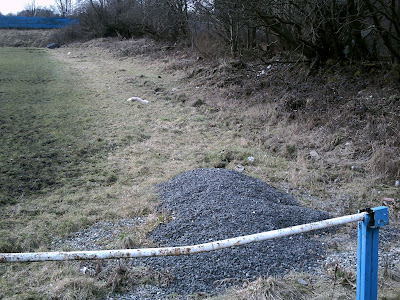
And from the flagless corner flag area we glance over to the covered shed.
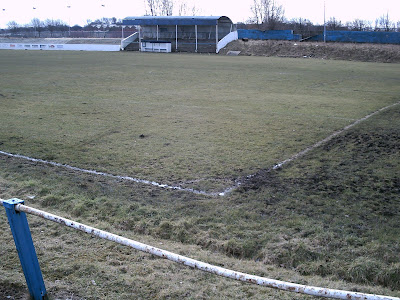
Now we're moving along the terraced side. Clearly the 'health & safety police' don't venture north of the border. The character of this delightful ground actually being all the better for that!
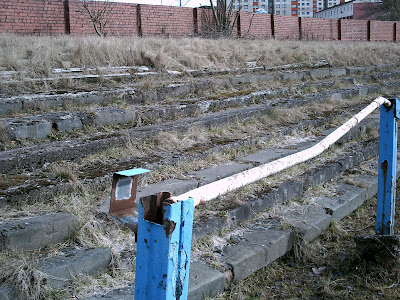
This must have been a superb length of terrace in it's day.
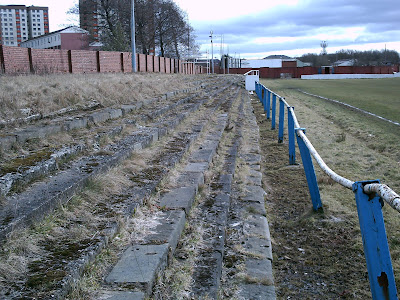
But now, clearly, showing it's age.
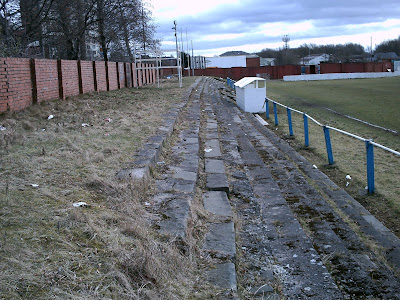
The dugout looks fairly new though.

There's a gantry behind it, presumably for Bankies TV.
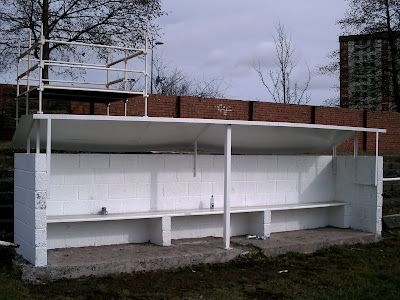
Moving along we see more old, unstable terracing.
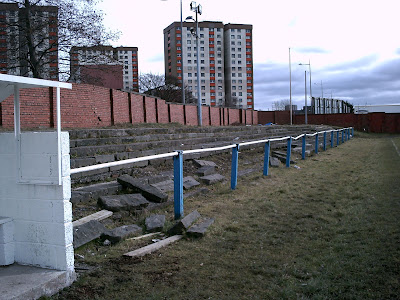
From the halfway line we look over to the barrelled area, the exact reverse of our earlier snap from over there.
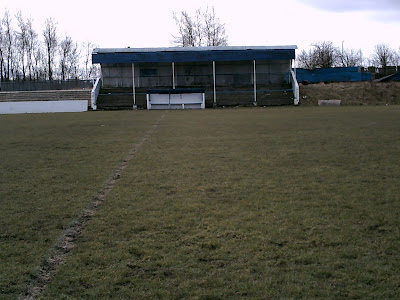
We continue along the terrace, with the turnstile now in sight behind the goal, as our walk around Holm Park is nearly over.
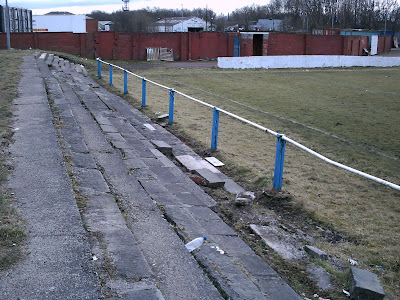
The club building now also in view.
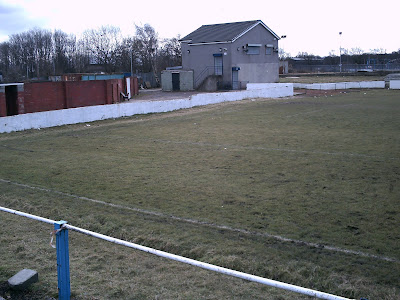
This snap shows how dangerous some of the terracing is!

Our final glance along the open terraced side.
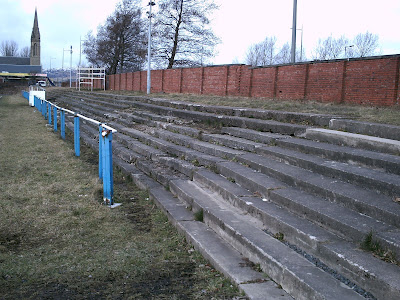
And here we are, back at the flat area behind the goal at the turnstile end.
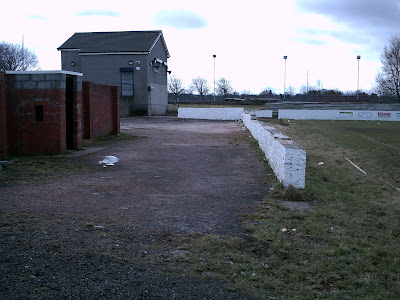
I hope to return here one day, & go through these turnstiles, to watch a game here. Maybe I will get lucky on my next Glasgow trip at the end of May 2010?
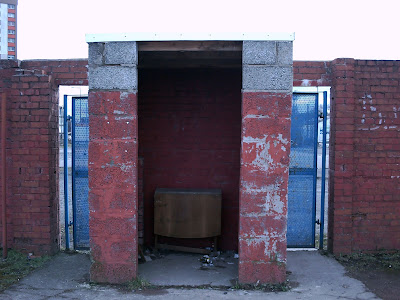
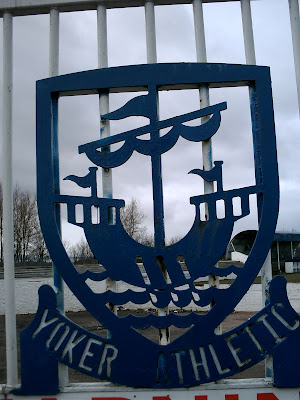
3 comments:
I was doing a little digging around for some inspiration whilst writing up an article for our forthcoming programme (Clydebank v Auchinleck Talbot 12th Nov 2012)and found your site. Holm Park has had a bit of a facelift since your visit and I'm sure you'd be pleased with the changes. Much of the terracing is too expensive to repair as it would basically never be used. The old overgrown area at the opposite end from the turnstiles was terracing in the 1960s as was the section between there and the cover. There is a small bar upstarirs from the changing rooms where alocholic or soft drinks and hot food is available. Clydebank now operate in the top flight of the West Region and Yoker play two divisions lower at the moment. Hopefully we will see you at one of our games where I am sure you would be made most welcom. Love your site and here is a link to ours http://www.clydebankfc.co.uk/2012/
Apologies for the fat fingers. Should have read - Nov 2011 not 2012, upstairs and not upstarirs and alcoholic and not alocholic. And they let me write for the programme? Thank goodness for editors :o)
Yes, Holm Park used to have terracing all round.
I don't know if the crumbling terrace on the Glasgow Road side is still in that condition or has been closed, but Clydebank are a well supported club and the number of people using that disintegrating terrace can be considerable.
The tower blocks flats you can see in the background of a couple of the pics are built on the site of Clydeholm Park, where a previous manifestation of Clydebank FC played in the SFL 1914-31. They folded as the Depression hit Clydebank particularly hard, but the stadium continued to be used for greyhoud oppression for many years after that.
The intractable problem with Holm Park is the pitch. Just behind the barrel-roof stand is the river, i.e. the now disused Rothesay Dock. Before the Clyde was walled and deepened in the 19th century to allow access upriver for bigger ships, this area was tidal marshland. That's what the Gaelic name An Eochair (Anglicised to Yoker) means.
The Clyde wants Holm Park back, and tries hard at times to recover it. All that's between Rothesay Dock and Holm Park is a concrete wall and a few metres of heaped spoil dating from 1906-7. As a result, the water table is very high in relation to the low-lying pitch, which can be very boggy and sometimes an unplayable quagmire when other grounds are fine.
Kilbowie Park, where a later manifestation of Clydebank FC once again played in the SFL, 1965-2002, was on higher ground in the middle of the town and a very decent ground. Technically the first all-seater (uncovered wooden benches!), it was easily big enough to keep up with SFL standards. The loss of Kilbowie was surely one of the most egregious "take the money and run" betrayals in football.
Post a Comment